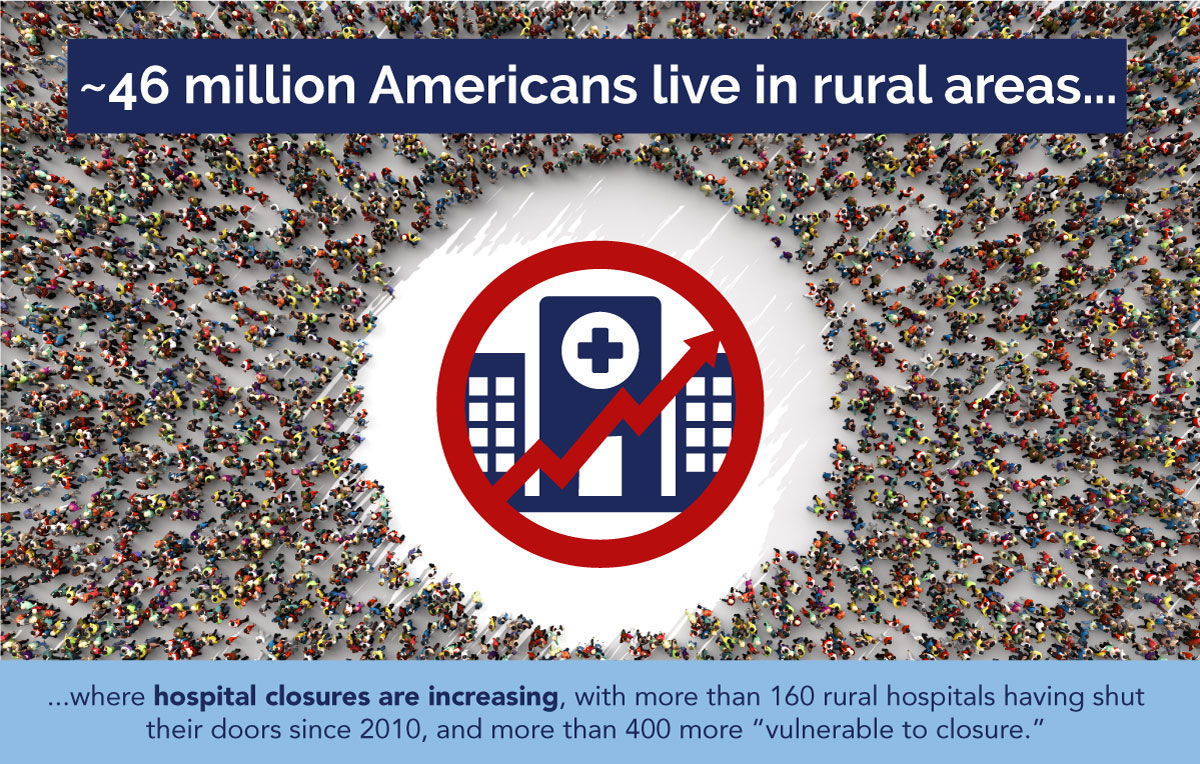Published on .
With the release of the 2025 Star Ratings, the landscape for Medicare plans has shifted dramatically. This year’s ratings reflect the highest cut points to date, pushing some contracts teetering on the brink of cancellation to termination. Unfortunately, rurally located beneficiaries, in areas that already face provider shortages and limited health plan coverage, may suffer even further from this increased plan access shortage.
Challenges faced by rural populations
Statistics highlight the challenges rural populations face. Around 46 million Americans live in rural areas, where hospital closures are increasing, with more than 160 rural hospitals having shut their doors since 2010, and more than 400 more “vulnerable to closure.” This pattern exacerbates health disparities, with rural residents already experiencing high rates of economic challenges and chronic disease, but less access to healthcare services than their urban counterparts.
According to the Centers for Disease Control and Prevention (CDC), rural Americans are more likely to die from heart disease, cancer and chronic lower respiratory disease compared to those in urban areas. In fact, approximately 57% of rural Medicare beneficiaries have two or more chronic conditions, further complicating their healthcare management and contributing to the urgency for effective intervention strategies.
The continued drive toward improved health equity
Additionally, the Centers for Medicare & Medicaid Services (CMS) has been placing increased emphasis on health equity. This focus is evident with the introduction of the Health Equity Index and the upcoming Social Needs Screening (SNS-E) measure, both designed to bridge gaps in care for disadvantaged populations, including rural beneficiaries.
These new measures encourage health plans to address social determinants of health (SDOH), such as transportation, housing and food security, which disproportionately affect rural populations. A Kaiser Family Foundation report found that rural beneficiaries are more likely to experience barriers to healthcare access related to transportation and food insecurity, underscoring the need for more targeted outreach, care and support.
Plan costs associated with rural populations
For Medicare plans, addressing the needs of rural populations is crucial. About 20% of the Medicare population resides in rural areas, and these members often incur higher healthcare costs due to delayed care, medication nonadherence and difficulties accessing healthcare providers. According to recent research, rural Medicare beneficiaries incur an average of 13% higher healthcare spend compared to their urban counterparts, largely driven by limited access to preventive care and delayed treatment for chronic conditions.
Implementing strategies to improve healthcare access, care and support for medication adherence can help reduce overall costs and improve health plan member outcomes—a significant benefit when contract terminations abound, especially in areas with scarce healthcare access.
Improving care and health outcomes for rural beneficiaries
Here are four best practices health plans can follow to improve healthcare access and care, as well as promote medication adherence in rural populations:
1. Leverage telehealth and hybrid solutions
Telehealth has transformed access to care in rural areas, where patients may live hours away from the nearest provider. However, solely relying on video to provide telehealth services can result in limited reach in rural areas with insufficient broadband access. Around 25% of rural households lack high-speed internet, according to the Federal Communications Commission (FCC). Fortunately, cellular access can bridge the digital divide for rural mobile users without web connections.
Health plans should implement hybrid models, combining telehealth with in-person visits where possible, and ensuring beneficiaries have access to telephone-based care options in addition to those requiring internet service. These hybrid solutions help rural patients access timely care, reducing emergency visits and preventing the worsening of chronic conditions.
2. Adopt omni-channel outreach for increased connection
Rural Medicare populations often face technology barriers, making it essential to use various communication channels. Omni-channel outreach, which can include phone calls, text messages, emails and direct mail, can ensure plans reach members.
An estimated 72% of rural Americans primarily use mobile phones for communication, making personalized text messages and voice outreach the preferred communication channels. By aligning outreach with members’ communication preferences, organizations can boost engagement and foster trust—especially in rural communities, where personal connections hold significant value.
3. Use key engagement techniques to improve adherence
Keeping members engaged goes beyond initial connections. Health plans that apply a behavioral science approach, such as having health coaches and care teams use evidence-based behavior change strategies (e.g., motivational interviewing, identifying and addressing barriers to change) achieve deeper engagement and efficacy by guiding members toward healthier decisions and actions, such as taking medications as prescribed or attending regular check-ups. Motivational interviewing, in particular, helps members better understand their health conditions and inspires them to take an active role in their care.
By pairing these proven techniques with data-driven insights, health plans can predict which members are likely to face adherence challenges and proactively address barriers. This behaviorally informed approach empowers members and drives meaningful outcomes.
4. Focus on resolving barriers to care
Overcoming barriers to care and medication adherence requires addressing both SDOH factors and behavior change challenges with strategies tailored to member’s unique needs. For rural beneficiaries, Medicare plans can focus on accessibility, personalized engagement and connection to local resources.
Addressing SDOH—like transportation, economic stability or access to healthy food—means helping members access support such as rides to appointments and partnerships with community organizations for food and housing assistance. These efforts remove practical barriers that prevent members from prioritizing their health.
To tackle behavior change barriers, plans can use motivational interviewing and behavioral science strategies to help members better understand their health and stay engaged with care. When members feel supported and valued, they are more likely to adopt healthy behaviors, like adhering to medications, or scheduling and attending preventive visits. By combining these strategies with solutions to SDOH challenges, health plans can drive lasting member engagement, behavior changes and better health outcomes, plus reduce healthcare costs.
Conclusion
Rural populations face unique challenges, but with the right strategies, health plans can drive stronger connections with their members, meaningful engagement and better health outcomes. Partnering with experts who understand and address these specific needs is essential.
At AdhereHealth, we leverage behavioral science–driven strategies to improve medication adherence and health outcomes in members, even in hard-to-reach rural populations. Let us help you overcome these challenges and boost your Star Ratings—contact us today to learn more.

Kempton Presley
AdhereHealth Chief Strategy Officer

